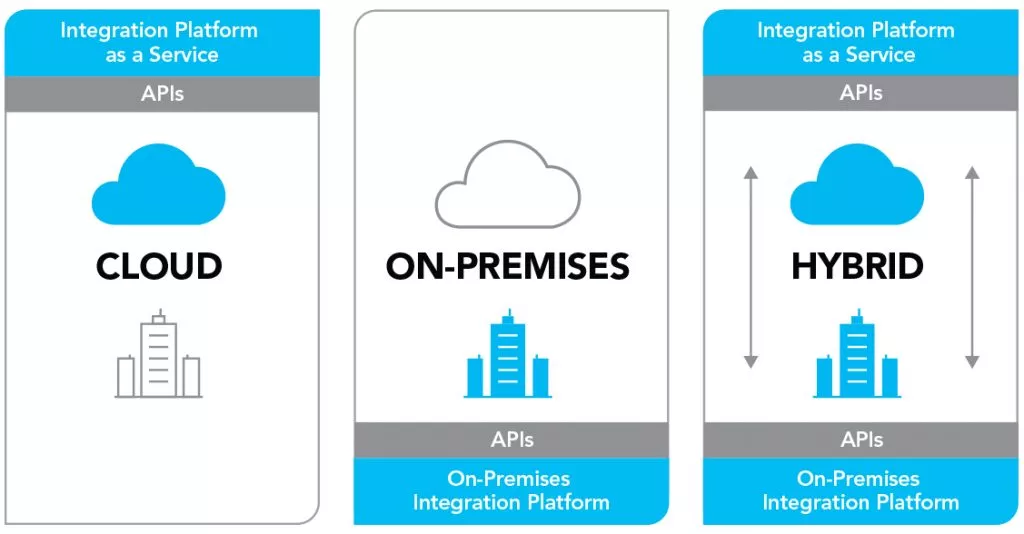Hybrid data integration for Real Digital Transformation
In the world of technology, hybrid integration has gained immense popularity over the years and is continuing to do so. It is the ability to connect data, software, business processes, and files, across both the edge platforms or the cloud. Yet, the concept is much larger as the integration spreads across various deployment models, endpoints and various other domains.
According to the real definition of hybrid integration, not just two, but four different components can be integrated together. These elements include integration models, deployment models, and endpoints such as IoT devices, or stakeholders. This integration is named as HIP or simply Hybrid Integration Platform, which is a tool used to simplify applications and data across the different deployment models. Through this HIP, organizations can convert data into actionable insights which helps them in taking quicker and more result-oriented decisions. For this reason, Gartner has predicted that by the end of 2022, over 65% companies in the world would have implemented HIPs in their systems.
Over the years, the need for IoT devices and higher mobile connectivity is increasing which is making the implementation of digital transformation an increasingly complex process. At present 12 million IoT devices exist in the technology ecosystem, which is bound to increase even further, which will further put a load on smart manufacturing integration. As a result, the capacity of new integrations within organizations has exceeded their actual capacity. To handle these integration complexities, enterprises often go for cloud solutions. But these systems do not account for the existing rigid legacy systems, which the companies can not get away with.
To implement digital transformation within the factories, new integration tools are needed to meet the complexities. Sending every piece of data to the cloud is not feasible, for which, a solution is needed that can help streamline processes, restructure integration architecture, spread the technical expertise over a broader range of personnel, streamline the processes, and many others, all while making use of the latest technologies. The use of these technologies and their tools can make the integration more efficient and simpler. In such cases HIP, prove to be the hero!
Hybrid integrations is extremely valuable as it pairs up horizontal as well as vertical integrations to meet the requirements of all aspects of the plant. Horizontal integration works to make sure that the IoT devices, machines, processes, equipment, cloud systems, and edge systems, are all interconnected seamlessly. While, vertical integration allows data to be used by the management to take actionable decisions by moving the data right from the sensors to all the business levels of the organization.
Having a hybrid integration platform is simply not enough. It must also ensure intelligent workflows spread throughout the system so that they can assess and take action upon advanced criteria by making use of machine learning and artificial intelligence. They must ensure seamless connectivity to edge platforms, so that spontaneous processing happens exactly where the data originates.
The HIP must also act as a bridge between the IT infrastructure and the physical world, so that integrations work between offices at all production levels of the supply chain. Another key aspect to keep in mind is to make sure that the platforms are event driven. This is crucial as it gives the company an opportunity to spontaneously act on any data that may have been modified, streamed, or even recently created.
One such strong HIP has been developed by Solulever, a Dutch tech startup. The company has created a manufacturing connectivity and intelligence platform, Brabo, that has been developed with great expertise of the in-house technology enthusiasts. The Industry 4.0 platform promotes smart manufacturing and delivers the true meaning of digital transformation, by combining the power of on-premise, cloud, and edge platforms. Brabo maintains a smooth data flow across the entire system through its centralised system, which makes it easier to maintain and monitor it. Companies must realize the true potential of integration platforms such as Brabo to enable intelligent modelling and smart decision making.
